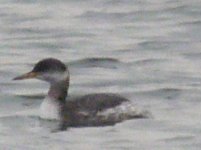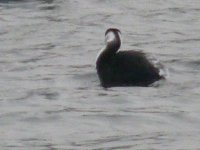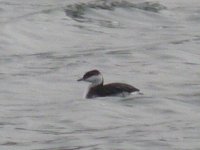Andy Musgrove
Well-known member
Whitlingham Aythya
Aythya was still present this morning at the east end of Whitlingham Great Broad, though again poor light and it was on the other side of the broad from me so again no photo. Size appears intermediate between TU and PO. Head shape varied during observations, initially looking more rounded than I'd noted on Saturday, but later looking more pointy (above/in front of eye). The amount of black on the nail is, I think, more than expected for an adult Scaup but probably not enough to rule out a first-year (going by the illustrations in the Macmillan bible). There does appear to be a paler (whiter?) area between the black nail and the grey majority of the bill but distance prevented me from establishing the true extent of this - if anyone gets close views in the coming days, then try to concentrate on this. Also has a hint of a pale area on the lores.
Otherwise, Slavonian Grebe makes five for the year at the broad, plus Red-necked, Great Northern Diver, 2 Smew, Goosander, Ruddy Duck and a long-overdue year-tick Kingfisher.
I am in the aythya hybrid camp. Forehead sloping giving wrong headshape, whitish subterminal band to bill, plenty of black on nail too. I suspect it should be more advanced now if it was a scaup too. Most 1w I have seen in recent years are almost adult like in late winter.
Just my opinion based on distant views yesterday.
Cheers
Aythya was still present this morning at the east end of Whitlingham Great Broad, though again poor light and it was on the other side of the broad from me so again no photo. Size appears intermediate between TU and PO. Head shape varied during observations, initially looking more rounded than I'd noted on Saturday, but later looking more pointy (above/in front of eye). The amount of black on the nail is, I think, more than expected for an adult Scaup but probably not enough to rule out a first-year (going by the illustrations in the Macmillan bible). There does appear to be a paler (whiter?) area between the black nail and the grey majority of the bill but distance prevented me from establishing the true extent of this - if anyone gets close views in the coming days, then try to concentrate on this. Also has a hint of a pale area on the lores.
Otherwise, Slavonian Grebe makes five for the year at the broad, plus Red-necked, Great Northern Diver, 2 Smew, Goosander, Ruddy Duck and a long-overdue year-tick Kingfisher.






